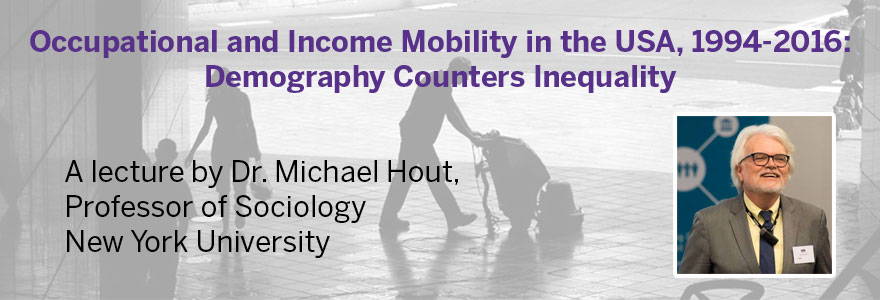News and Updates
Contact
Faculty of Social Science
Social Science Centre
Room 9438
Western University
T. 519-661-2053
F. 519-661-3868
E. social-science@uwo.ca
Occupational and Income Mobility in the USA, 1994-2016: Demography Counters Inequality
October 03, 2017
There is a long-held assumption that, in North America, children will do better than their parents, both in terms of income levels, and the social status of their job.
This was true for generations after the end of the Second World War, yet, since the 1980s, this intergenerational growth has seemingly slowed.
On November 2, Michael Hout, Professor of Sociology at New York University, will discuss the changes in social mobility, as part of the Balakrishnan Distinguished Lecture in Population Dynamics and Inequality at Western University.
Hout’s lecture, “Occupational and Income Mobility in the USA, 1994-2016: Demography Counters Inequality” relies on data from the General Social Survey, and will examine how two interacting and competing changes in society affect the levels of social mobility.
Calculations of social mobility consider how people are doing, relative to their parents. Occupations are given a social status score, and these are compared to the score of their parents.
For people who were working in the 1960s, there was a large amount of social mobility. As they grew up during the Great Depression and the Second World War, millions grew up in families that were making barely enough to get by. Compared to that, the comfort and relative affluence of the 1960s was substantial upward mobility.
Since the 1980s inequality rose. As it did, middle-class incomes barely increased, even as the total economy grew. These trends slowed social mobility. The strong correlation between workers’ current status and that of their parents came to dominate mobility chances.
“People whose lives were pretty good in the 1980s have lives that aren’t much better now,” said Hout. “Their situation feels stagnant.”
The increase in single-family households since the 1980s creates more social mobility, ironically, as an absent father passes few advantages on to his children. Family breakup counters inequality. Without it, inequality would yield even less social mobility.
Hout suggests that these two factors balance each other just enough to keep the correlation across generations close to what it was 25 years ago. Other factors such as race, gender and age affect where a person stands in the distribution of occupations and pay but not the correlation across generations. The biggest factor that impacts correlation is education level.
“The correlation is strongest for people with the least education,” said Hout. “If you drop out of high school, your parents’ circumstances affect your circumstances a lot.”
Getting a college education erases that correlation. “If you are a working-class kid who goes to college, it breaks the intergenerational correlation, leveling the field for the graduates,” said Hout. “But there is a strong effect of parents’ circumstances as to who gets that diploma. The odds of a working-class kid getting a college diploma is substantially lower than it is for children from more privileged families.”
Easier access to education, said Hout, would be the most important way to make an impact on social mobility.
Michael Hout served as president of the International Sociological Association’s Research Committee on Social Stratification and Mobility from 1998-2002 and current chairs the American Opportunity Study, a standing committee of the National Academy of Sciences.
The Balakrishnan Distinguished Lecture in Population Dynamics and Inequality is presented by the Department of Sociology. The lecture series was established through a donation from professor emeritus T.R. Balakrishnan, as part of the 50th anniversary celebrations for the Department of Sociology.
Hout will deliver the lecture on Thursday, November 2, 2017 from 2:00 pm to 4:00 pm in the McKellar Room, University Community Centre, Western University, London, ON.
The lecture will also be livestreamed, available to watch on this page:

